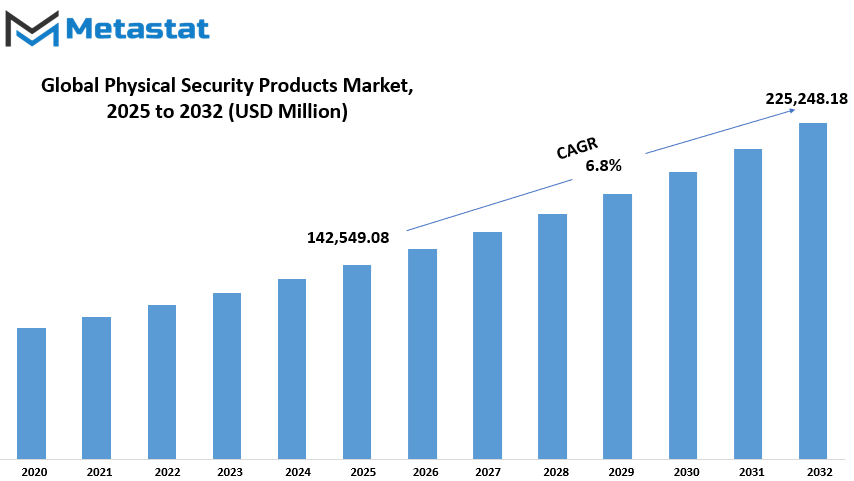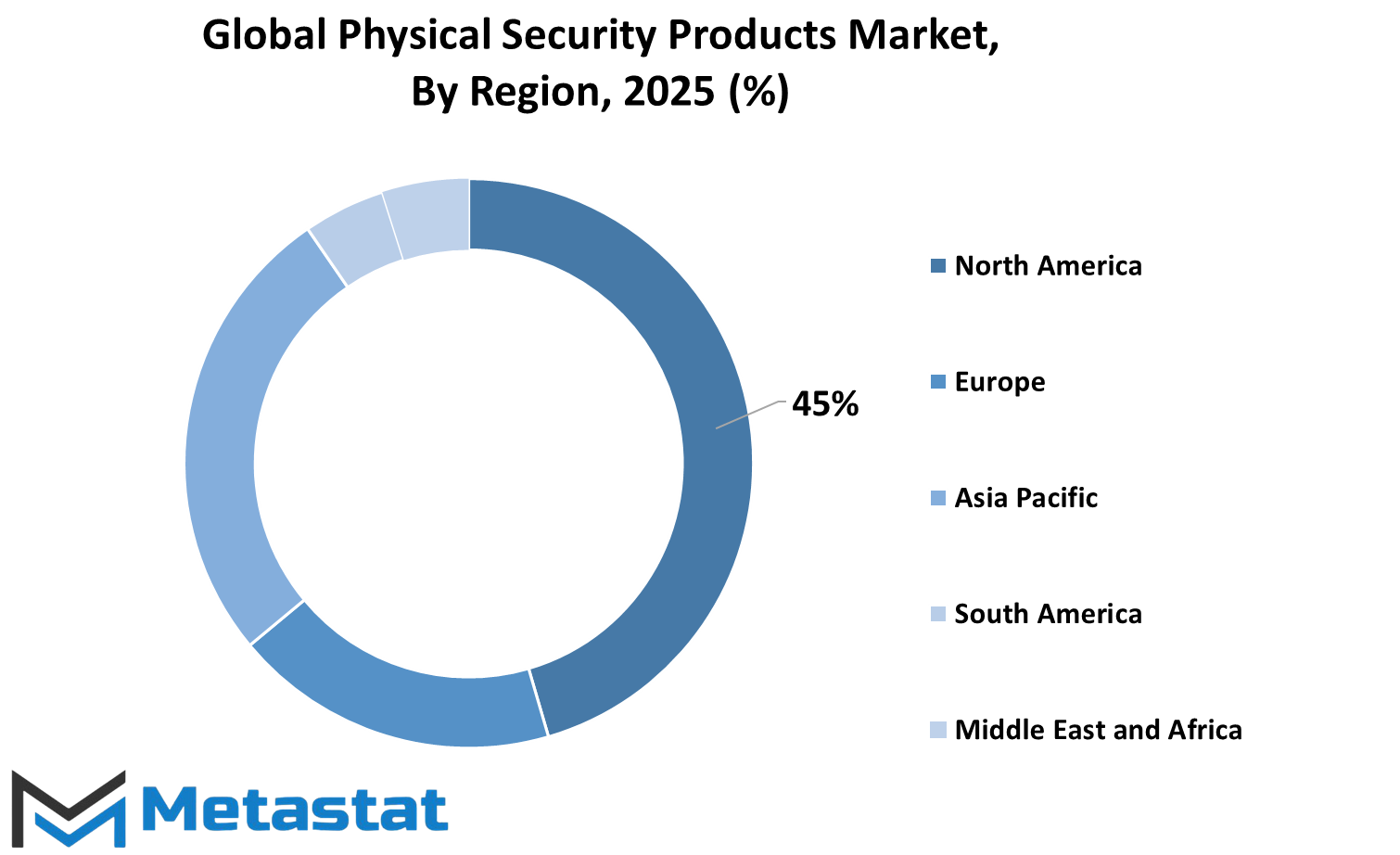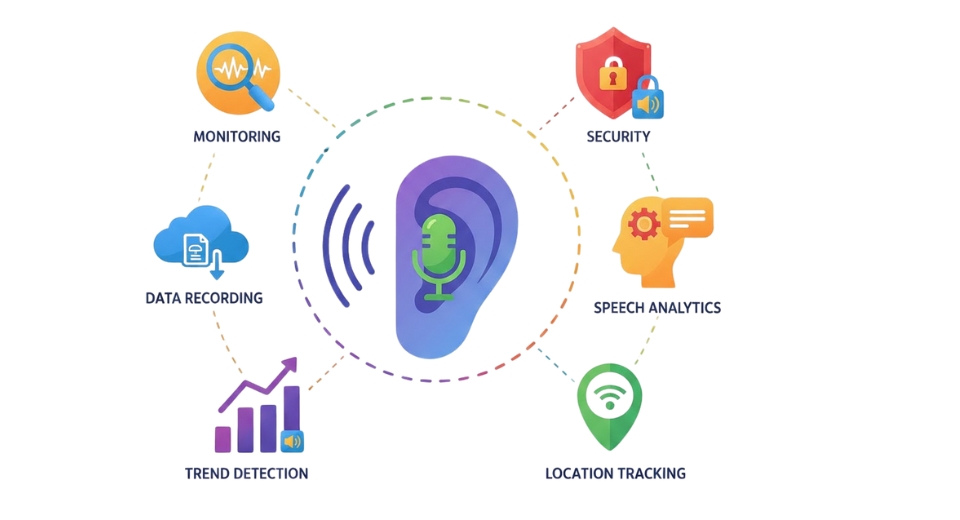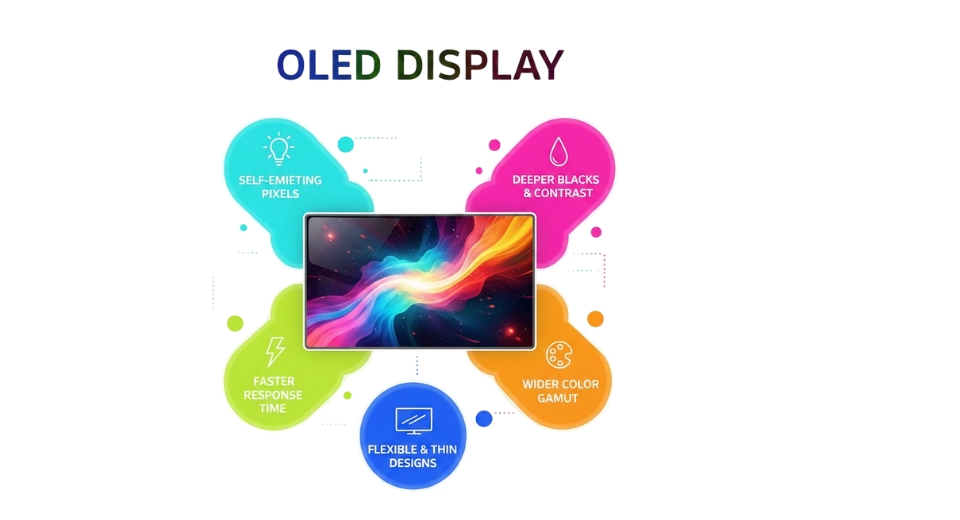MARKET OVERVIEW
The Global Physical Security Products market, as a division in the larger security and surveillance market, falls within the segmentation that caters to protective solutions for people, assets, and infrastructure. In this respect, it seeks solutions for systems of physical security which involve situations such as prevention of unauthorized access and detection of threats, as well as an environment that is preserved for saving critical life. Such a condition would not be unassociated with the last point that security concerns are always evolving; therefore, businesses, governments, and organizations will keep looking for advanced technologies to shore up their security platforms, making it a core international safety measure.
With the increasing complexity of the threats, the demand for physical security solutions will remain, triggering integrated systems that can monitor and respond in real-time. The Global Physical Security Products Market holds devices like surveillance cameras, access control systems, alarm systems, barriers, and perimeter security solutions. Apart from serving as deterrents, these products also serve investigative purposes, ensuring security breaches are reported and being acted on in good time. Digital transformation has the impact of infusing physical security systems with intelligent automation, remote monitoring capability, and data insights that increase effectiveness overall.
This market cuts across several industries that include commercial, residential, transport, defense, and governmental. Even though government agencies center their attention on safeguarding critical infrastructure as well as public spaces, businesses will continue shelling out on more excellent all-around assets and employee-and-customer security solutions whose market-global footprint will be ever vast concerning more technological advancements as artificial intelligence, biometric recognition, and cloud security management platforms clearly enhance conventional protective solutions that eventually also optimized security strategies by intervening minimally during manual processes and thus, improved situational awareness.
All these physical security products combine with cyber security in such a way that every security framework comprises both physical and electronic threats. Their technological convergence will pave the way for crafting more sophisticated ecosystems of security into which organizations can channel the risks holistically. In addition to that, much attention will also be given to their security infrastructures of smart cities, which would comprise integrated surveillance networks, intelligent traffic monitoring, and automated access control-all of which would enhance safety within those urban environments. This would also be another way in which the Global Physical Security Products market sustains innovations by providing flexible solutions according to what challenges security faces today.
Global Physical Security Products market is estimated to reach $225,248.18 Million by 2032; growing at a CAGR of 6.8% from 2025 to 2032.

GROWTH FACTORS
The Global Physical Security Products market will evolve with advancements in technology. Innovation, affordability, and connectivity across all systems will become the new professional creed for leading companies. This will be fostered by the increased demands for intelligent and automated security solutions. Unlike before, a growing emphasis on maintenance is now going to be added in protection.
Given the relatively newfound stress for safety added by companies and individuals alike, demand for physical security products is predicted to continue on an upward spiral. Organizations are investing in sophisticated security solutions to buffer threats to public and private spaces, restrict unauthorized personnel from access, and provide utmost safety. These operations have made various markets for physical security products gain heavy demand in return, thus pushing companies towards innovations and development of smarter yet efficient systems of security. From CCTVs to biometric controls, companies look for reliability and simple solutions.
AI and IoT, along with other sciences, are going to bring very fundamental shaping on security products. Security systems provide real-time monitoring, instant alerting, and action in an automated manner against the threat. AI analytics will help detect behavioral anomalies, reduce human error, and enhance response time. As automation would smoothen better security, smart security solutions would find entry into houses, offices, and places of public interest. Companies are focused on solutions that promote safety and comfort so that their customers can supervise their properties almost anywhere.
On the contrary, while demand for security systems has consistently increased tremendously, some barriers could inhibit that growth, such as capital installation and maintenance costs. Numerous industrial and residential consumers could resist adopting advanced security systems strictly due to arbitrary requirements for capital. Meanwhile, interfacing new security products with older infrastructures presents its own challenges since investments will be required for technological enhancement. Companies providing an economical price product with seamless interfacing with existing systems will have a competitive advantage.
This emerging need for a fully smart and automated range of security solutions is a great prospect for growth. The shift of residential and business environments toward connected security devices has enabled greater control and flexibility. Advanced surveillance cameras, motion detectors, and access control systems are expected to become a part of most buildings. The commercial market is showing increasing interest in security solutions with cloud storage features, which allow the company's security systems to be monitored from anywhere.
MARKET SEGMENTATION
By Type
Growing safety and protection consciousness across industries is fueling the expansion of the global market for physical security products. In light of heightened concerns with crime, terrorism, and access control, organizations invest in specialized secure environments. These products should not only avert threats, but also assist in timely and effective incident response. Such increased focus on installing a robust security system by enterprises, governments, and even residential areas is driving the global demand for physical security products.
Video surveillance systems are by far the most important segment of this market, with the largest value of $44,653.50 million. Movie cameras have been widely used in public areas, corporate establishments, and private homes. They provide real-time monitoring, evidence collection, and decision-making support when emergencies arise. Over the years, there have been many improvements pertaining to these systems with respect to image clarity, remote access, enhanced storage, etc. Along with video surveillance, access control systems are also becoming very popular. These systems establish the goings and comings in and out of a building or restricted area. Access control systems can use cards, codes, or even biometrics to ensure that only those persons who have been given permission can get through.
Another important segment is intrusion detection systems. These systems have been designed to notify users of any attempted unauthorized intrusion into secured areas. Motion sensors or door alarms are just some of the breakthroughs in these systems that help to avert break-ins where the damage is done. Furthermore, perimeter security comprises all measures taken to ensure that the fringes or outer limits of a property are guarded. Fences, barriers, sensors, and surveillance cameras are put together in order to deter any threat from the main facility. These devices become extremely useful for large land areas such as airports, factories, and military bases.
Fire life safety systems are sometimes considered equally important to physical security. They entail fire alarms, extinguishers, sprinklers, etc. These systems are designed to protect people in the event of a fire and mitigate injuries or damage to property. Because most governments and safety standards require these systems within their buildings, they have become an essential feature of any security plan.
This interesting interrelationship among various segments allows for physical security to be far more sophisticated than merely locking doors. It includes the application of smart tools and systems to generate safer environments for everyone, from a small office to a large public venue.
By Technology
But as technology advances it also becomes a tool for presenting even more complex threats and therefore the assumption that the physical security products will continue to be in demand purely for the future loyal investors. Thus defense in bounding budgets towards security measures, among others, continues. The transformation in the Global Physical Security Products market will be enormous as technology continues to redefine how security systems will be run. Businesses will move away from the outdated ways to advanced solutions with more monitoring speed of response and seamless integration into existing security networks.
AI-based security systems will assist the system in identifying threats in real-time under minimal human surveillance. Pattern analysis and unusual behavior detection would further enhance overall security. Future connectivity in the market at this phenomenal level will be attained by IoT security devices; this would permit convergence of different hydrosols within security systems to ensure an entire holistic approach to security. Cloud-based security systems would continue to enter the arena as tailor-fitted and scalable provisions available to houses in the management of safety data. Such data access and analysis would also aid the quick response of organizations concerning security matters.
IoT-enabled security will mark a phenomenal height thickened with connections in the market. It will allow the security systems to connect to one another for an overall security approach. Other popular categories would be wireless security systems that only facilitate installations. Hence, the application range opens up with these. This will make all these conditions valuable for a company or even a private individual because everything is no longer tied to cords. Access control through blockchain will also add another level of security, and only authorized persons will be allowed to enter limited areas. Thus, such technology prevents unauthorized access while keeping records immutably.
It would be best to concentrate the Global Physical Security Products market on the ability to answer the different and changing scenarios of security threats. The products thus designed would be simpler to understand and yet provide more protection. The use of AI, cloud computing, IoT, wireless systems, and blockchain will cause the introduction of new security standards, more effective, more available, and from which reliability can be expected not--only from the commercial or individual security solution but rather by anticipation or prevention of risks before they occur.
Gradually evolving with advancement, these products are brightening homes and offices by melting large chunks of security in terms of efficiency while delivering authenticity. Demand will create competition ensuring that it will keep at innovating security solutions. It would compel forward technological innovation, further compounding the progress already made on these systems. Security continues to advance, and these products are becoming more intelligent and skillful with the passage of time.
By Distribution Channel
Pressure on security concerns and increased physical security will, however, also increase the demand for physical security products. Security threats are rising and increasing, thus this implicates an increased market demand for advanced security solutions: better innovations in reliability and advanced technologies pave the way for greater expansions in the global Physical Security Products market. Monitoring is no longer a luxury; aside from CCTV, it includes everything high-tech from biometric access control to AI-based monitoring systems. These product developments are also incorporated to protect more effectively in complexity of threats.
Innovation will be the defining chapter of this market going ahead. Prototypes include facial recognition, tracking in real time, and automated threat detection in security products. These latest technologies allow mitigating security concerns while creating convenience in the way businesses and organizations engage with their customers. The development of cloud integration solutions will also facilitate remote monitoring of the security system. This would further drive efficiency in security management and reduce response time in emergencies.
Along with this would also emerge new forms and channels for channels in the supply chain. The different distribution channels include direct sales, online retailing, security solution providers, and distributors. Direct selling allows both manufacturers and system integrators to customize solutions according to the particular security need of an organization. Online retail is also booming, letting consumers purchase security products without the intervention of other people. Security Solutions Providers extend their work at guaranteeing that businesses or institutions get professional guidance when selecting different products. Distributors and resellers form an important foundation of the coverage of security solutions, in helping companies and individuals as they find the best match for their needs.
The companies would perfect their work by inventing solutions that are time-effective yet user-friendly. The machine would integrate artificial intelligence and machine learning with automation to ensuring accuracy and speed in the event of security infringement. Such security solutions would give real-time alerts to businesses and homes with messages leading to preventive measures before incidences occur.
Safety remains an important aspect in various industries, thus the Global Physical Security Products market will continue to flourish. If the future is going to be driven by new technology innovation in security, one must be two steps ahead by delivering next-gen solutions. Healthy competition would also mean more improved and easier-to-use security products in his hands. Empowered thus would be the customers as far as securing their valuables is concerned.
By End-Users
The global physical security products market is expected to continue its enviable growth trajectory due to the ever-increasing safety and protection demands from various sectors. Industries and organizations alike are coming to terms with the threats of theft, vandalism, and unauthorized access, which in turn has created a huge demand for advanced security solutions. Thus, looking into the future, security products may be expected to become smarter and thus provide better monitoring, improved response time, and seamless integration into digital networks.
Security solutions are used in avocations to comprise another layer of shield for enterprises against threats for protecting their assets, employees, and customers. Commercial and office buildings alike will see increased utilization of high-tech surveillance systems, biometric access controls, and automated threat detection in providing safe environments through increased workplace demands toward improved security. Smart cameras, AI threat analysis, and cloud-based monitoring would then become the unchanging new norm for the act of business in a transition mode to more enhanced workplace security. In the industrial and manufacturing sector, advanced security would then be a requisite, for protecting equipment, proprietary information, and fellow workers would become paramount. Deterrent perimeter security, smart fencing, and the like with automated monitoring will all serve for the prevention of such threats.
Government and defense institutions shall always be the ones having stringent security measures. In the future, more sophistication shall be introduced into surveillance systems, secure access control, and AI-based monitoring means providing timely threat recognition. In light of growing interest in concerns surrounding cybersecurity, good physical security will partner with the right digital security to achieve complete protection. Smart vaults, face recognition systems, and artificial intelligence-based fraud detection will continue to attract investment by banking and financial services-oriented toward customer asset protection. Physical and virtual security will become more interlinked as financial transactions are increasingly going online.
Healthcare and educational institutions comprise a good deal of security solutions that safeguard patients, students, and staff. A high demand is anticipated for AI-assisted monitoring systems, secure access control, and emergency alert systems. Smart cameras with real-time analytics are to be integrated into hospitals and schools to monitor unusual activity and take instant action. Retail and hospitality are thus going to be heavily oriented toward providing security to their customers, employees, and inventory. AI surveillance, theft prevention, and automated access systems would indeed strengthen safety and availability through a continuous customer experience.
Changes in security measures will be extensive in the residential realm. Increasingly, homeowners will be putting in smart security products, such as AI video doorbell systems, biometrics, and automated monitoring.
|
Forecast Period |
2025-2032 |
|
Market Size in 2025 |
$142,549.08 million |
|
Market Size by 2032 |
$225,248.18 Million |
|
Growth Rate from 2025 to 2032 |
6.8% |
|
Base Year |
2024 |
|
Regions Covered |
North America, Europe, Asia-Pacific, South America, Middle East & Africa |
REGIONAL ANALYSIS
As long as organizations and governments keep investing in more advanced security solutions, the demand for physical security products will always remain high. The decision-making behind the countermeasures and the defense-concerning breach or unauthorized entry, theft, or even cyber-physical threats is where businesses have placed high priorities in their endeavor to protect their assets and individuals. Global physical security products will continue steering innovations with high-tech surveillance systems for access control and perimeter protection objectives. Human capital attracts AI, biometrics, and cloud-based monitoring to further bolster security and provide instantaneous response in attempts to avert potential hazards.
Regional culture will have an effect on the adoption of security products around the world. North America, including the US, Canada, and Mexico, would continue being touted as the land of opportunity with respect to intelligent and end-use application surveillance, biometric, and AI-fueled security solutions. The world's laboratories for very new technologies would discover innovation, feeding back into the standards for security that gradually encircle North America. Europe would seem not to be far behind in catching up; with countries UK, Germany, France, and Italy included. Growth will always be steady since the emphasis now is on smart city infrastructures and the strict regulations put in place in that regard. It is this very track that will take such enterprises and government agencies into the field of advanced physical security in order to capture these newly evolving threats.
This region of Asia-Pacific will have a very significant global impact for the future portends of the industry. The continuous urban development scales of countries like India, China, Japan, and South Korea increase the demand for security solutions. The continent and increased demand for a multitude of residential as well as commercial. Smart cities will play a pivotal role in increasing the adoption of advanced surveillance and access control technologies, while growing industrialization and government initiatives toward improving national security will power along. Thus enhanced business prospects and urban population will further demand an increase in physical security across the region.
Brazil and Argentina will be part of the development of strengthening the security infrastructure by governments and business enterprises instead of being left behind. Retail, banking, and the transportation business are driving the demand for solutions in terms of market expansion for security. Events will develop at a slower pace in this region compared to many others in the world, but will attract funds mostly within surveillance and access control systems.
Higher security infrastructure developments and citizen safety concerns including, but not limited to, GCC countries, Egypt, and South Africa, will spur demand for security products within the Middle East & Africa Region.

COMPETITIVE PLAYERS
Physical security products are set to retain the pace of growth because the people, the organizations, and the government are always prioritizing their safety. The freedom and autonomy associated with installation of such systems will continue to increase with time, especially now that theft, vandalism, and cyber threats are on the increase. They will funnel investment towards advanced technologies meant to improve their overall surveillance, access control, and alarm systems. Most expected developments in the global physical security products market are anticipated from forward-moving global security threats that will require intelligent solutions to cater to.
Innovation will indeed pave the way for tomorrow's generations in this field. It is predicted that conventional security means will soon be converted into AI-control, cloud-based monitoring, and real-time visualization of data. Such futuristic advances will facilitate faster and efficient detection and responses to threats. Soon it would be a reality to have smart cameras that have facial recognition, biometric validated automated access control, and AI-driven analytics. Businesses will look for their access to protection and comfort, thus increasing systems available for remote management through mobile applications.
This global physical security products market will soon usher in fierce competition amongst the top players. Honeywell International Inc. and Bosch Security Systems are part of the established players in the market segment. Even newer entrants like Johnson Controls (Tyco) are making strides. Axis Communications, Hikvision Digital Technology, Dahua Technology are few such other names operating in high-definition surveillance cameras and smart monitoring systems. The increasing sophistication with which security threats are starting to be perceived is making companies such as ASSA ABLOY, ADT Inc., and Siemens Building Technologies to consider the artificial intelligence implantation in their products.
Technological advancements will lead organizations toward the development of security solutions that are efficient and reliable. With the help of other involving smart systems, Schneider Electric, Hanwha Techwin, and Genetec Inc. work together to build security products well integrated into their smart systems so that companies have an easy time managing security. The major two companies that have more engagement in thermal imaging and advanced surveillance technology are FLIR Systems (Teledyne FLIR) and Pelco (Motorola Solutions) increasingly beefing up security to high-risk areas. However, like any other threat that evolves, new innovations and improvements will be put in place so that these companies stay ahead of the game in providing end-user-friendly safety.
Physical Security Products Market Key Segments:
By Type
- Video Surveillance Systems
- Access Control Systems
- Intrusion Detection Systems
- Perimeter Security
- Fire & Life Safety Systems
By Technology
- AI-Based Security Solutions
- Cloud-Based Security Solutions
- IoT-Enabled Security Devices
- Wireless Security Systems
- Blockchain for Access Control
By Distribution Channel
- Direct Sales (OEMs & Integrators)
- Online Retail
- Security Solution Providers
- Distributors & Resellers
By End-Users
- Commercial & Office Buildings
- Industrial & Manufacturing Facilities
- Government & Defense Institutions
- Banking & Financial Services
- Healthcare & Educational Institutions
- Retail & Hospitality
- Residential Sector
Key Global Physical Security Products Industry Players
- Honeywell International Inc.
- Bosch Security Systems
- Johnson Controls (Tyco)
- Axis Communications
- Hikvision Digital Technology
- Dahua Technology
- ASSA ABLOY
- ADT Inc.
- Siemens Building Technologies
- Schneider Electric
- Hanwha Techwin
- Genetec Inc.
- FLIR Systems (Teledyne FLIR)
- Pelco (Motorola Solutions)
WHAT REPORT PROVIDES
- Full in-depth analysis of the parent Industry
- Important changes in market and its dynamics
- Segmentation details of the market
- Former, on-going, and projected market analysis in terms of volume and value
- Assessment of niche industry developments
- Market share analysis
- Key strategies of major players
- Emerging segments and regional growth potential








 US: +1 3023308252
US: +1 3023308252






